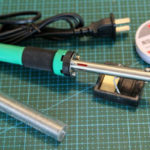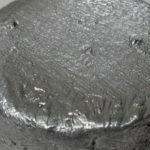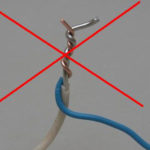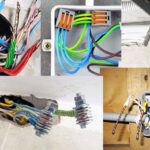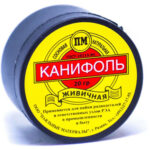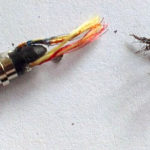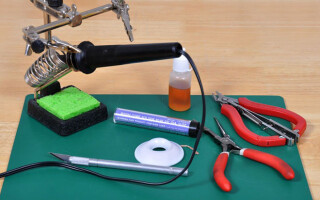Every man wondered how to solder two wires. Performing such actions is required when repairing household and computer equipment, electronic appliances and machine tools. Before you get an answer to the question posed, you need to familiarize yourself with the tools and materials necessary for the job.
Content
What is required for soldering
Before you start soldering the wires, you need to prepare:
- Soldering iron. This is the main tool for working with metal products. They melt the solder, with which the elements of the microcircuit are connected. Devices have different capacities. The higher this value, the faster the soldering iron heats up. It is recommended to choose a tool with a power of more than 60 watts. The soldering iron is powered by 220 V.
- Solder. This term refers to a tin-based alloy used to join metals with a high melting point.Solder is a long wire, less often tin is sold in small pieces.
- Rosin (flux). It is used for tinning of microcircuit elements. Rosin gives reliable adhesion of metals to other materials.

Choosing rosin and fluxes
The choice of flux or rosin depends on what materials will be soldered:
- Tinned details. In this case, liquid rosin is used. You can replace it with a flux paste that does not dry out and does not require removal of residues. Rosin gel has a gel-like structure, the product is easily washed off with water.
- Working with small radio components. Activated rosin fluxes, for example, LTI-120, are suitable for this. Glycerin hydrazine paste also has positive qualities. However, after using this tool, parts must be degreased.
- Soldering iron, brass and copper parts of small sizes. Well copes with the task Liquid rosin Lux.
- Connection of massive galvanized parts. In such cases, acid fluxes are used (orthophosphoric or soldering acid, Fim). Acid compounds work quickly, so the metal does not need to be heated for a long time.
- Soldering aluminum parts. In order to solder wires of these types, it was customary in the past to treat the tip of a soldering iron with rosin. However, F-64 flux is now used to work with aluminum and copper, which provides good adhesion of metals. The product contains toxic chemicals, so it is recommended to work in a ventilated area. The F-34 flux, which has less activity, is considered safer.

Additional materials
Additional materials that simplify the work with a soldering iron include:
- Stand. Provides convenience and safety of work. It is made from a thin sheet of metal.
- Braid to remove excess solder. Consists of flux-treated thin copper strands.
- Fixture with clamps and magnifying glass. Provides convenience for working with small parts and a soldering iron.
- Clamps, tweezers, pliers. Facilitate work with heated parts.
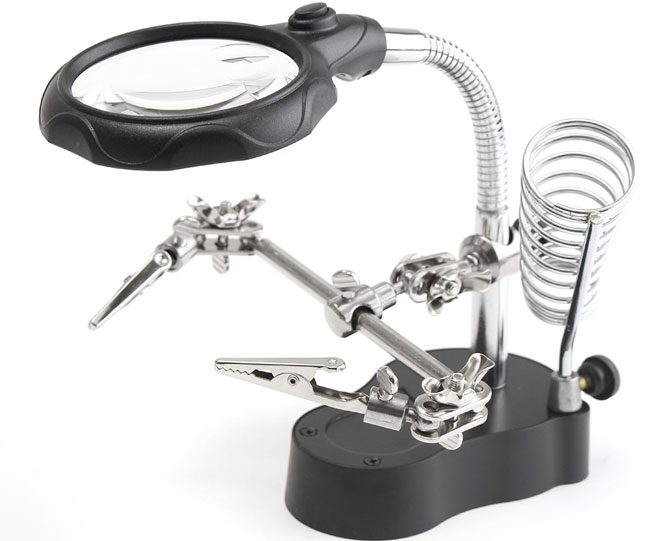
Soldering process with an electric soldering iron
How to solder wires, what you need to do for this:
- Tin the soldering iron. To sharpen the sting, you need to use sandpaper, which is worked until a smooth, shiny surface is obtained. After that, the heated tip is immersed in rosin and solder. The tip is applied to a wooden board. Manipulations are repeated until the soldering iron tip acquires a silver color.
- Tin wires. They are cleaned of braid and covered with rosin, a soldering iron tip is placed on top. After the flux melts, the wire is removed.
- Solder the tinned parts. The sting of the device is processed with solder, the place of soldering is heated to the desired temperature. After coating the wires with tin, unnecessary movements are avoided. A fan is used for rapid cooling.
Features of soldering when using flux
Soldering parts using flux has the following features:
- The melting point for rosin must be lower than for solder. This condition is considered mandatory for a strong adhesion of parts.
- The flux must not come into contact with the molten tin. Each tool forms a separate coating that provides a reliable connection of parts.
- Rosin should be evenly distributed over surfaces.
- The liquid flux must wet all parts to be soldered and have high fluidity.
- It is necessary to choose a product that dissolves and removes films from non-metallic materials that appear on the surfaces.
- It is necessary to use a flux that does not react with the materials to be joined. This helps to maintain the performance of the elements.
Soldering stranded wires
Many are interested in the question of how to properly solder such wires with a soldering iron. The connection is made as follows:
- wires are cleaned of insulation;
- bare veins are stripped to a metallic sheen;
- joints are treated with solder;
- parts are fastened by twisting;
- the place of soldering is cleaned with sandpaper (burrs should not remain that violate the strength of the fastening);
- the joint is covered with molten solder;
- the place of fastening is wrapped with electrical tape.
Is it possible to solder copper wire with aluminum
Aluminum and copper conductors can be soldered. In this case, use a special solder for aluminum. Copper wire must be tinned with high quality. This is enough to prevent chemical reactions between copper and aluminum wires.
Similar articles:
